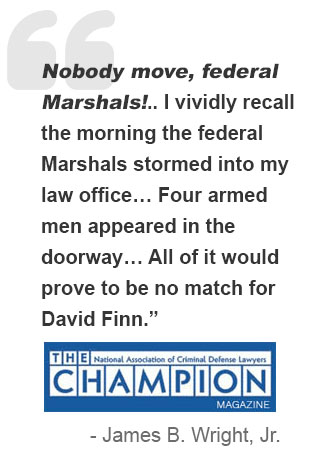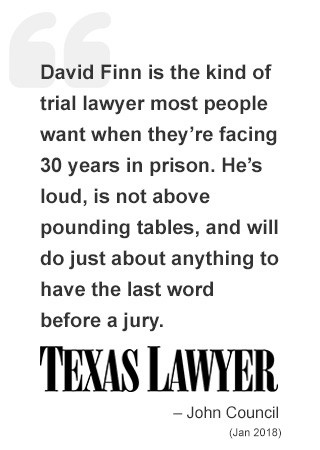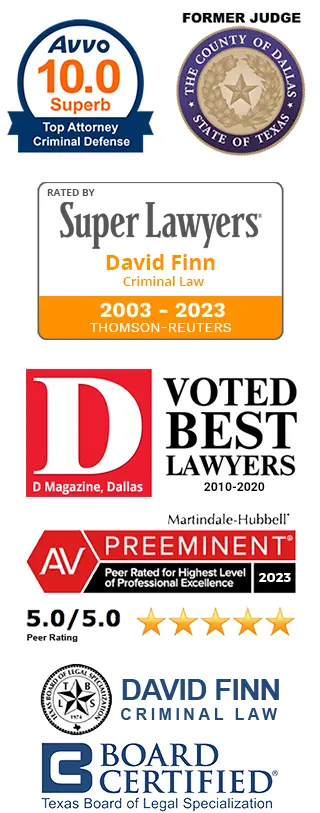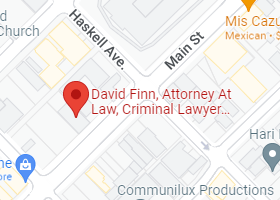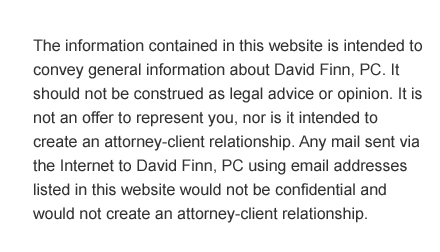


New Case: 5th Circuit & Blakley
Looks like the United States Supreme Court will be deciding whether the federal sentencing guidelines will stand as we now know them.
United States Court of Appeals
Fifth Circuit
F I L E D
July 12, 2004 IN THE UNITED STATES COURT OF APPEALS
FOR THE FIFTH CIRCUIT Charles R. Fulbruge III
Clerk
_____________________
No. 03-30437
_____________________
UNITED STATES OF AMERICA
Plaintiff – Appellee
v.
FRANCISCO D PINEIRO, also known as Frank Pineiro
Defendant – Appellant
__________________________________________________
Appeal from the United States District Court
for the Western District of Louisiana
__________________________________________________
Before KING, Chief Judge, and BARKSDALE and PICKERING, Circuit
Judges.
KING, Chief Judge:
In this case we are called upon to consider the impact on
the federal Sentencing Guidelines of the Supreme Courtâs recent
opinion in Blakely v. Washington, 124 S. Ct. 2531 (June 24,
2004). Defendant Francisco D. Pineiro was convicted in the
district court of violating the federal controlled-substances
laws. During sentencing, the district judge followed the non-controversial
pre-Blakely procedures and made various factual
findings that determined Pineiroâs sentencing range under the
Guidelines. This court assuredly will not be the final arbiter of
whether Blakely applies to the federal Guidelines, but the
unremitting press of sentencing appeals requires us to produce a
decision. We have undertaken to discern, consistent with our
role as an intermediate appellate court, what remains the
governing law in the wake of Blakely. Having considered the
Blakely decision, prior Supreme Court cases, and our own circuit
precedent, we hold that Blakely does not extend to the federal
Guidelines and that Pineiroâs sentence did not violate the
Constitution. Accordingly, the defendantâs sentence is affirmed.
I. BACKGROUND
A three-count indictment charged Pineiro with committing
federal drug offenses. Count one charged Pineiro with carrying
on a marijuana- and cocaine-distribution conspiracy, involving at
least 100 kilograms of marijuana and 50 grams of cocaine, in
violation of 21 U.S.C. §§ 841(a)(1) and 846.1 Count two charged
him with possessing and aiding and abetting possession with
intent to distribute approximately three-fourths of a pound of
marijuana in violation of 21 U.S.C. § 841(a)(1) and 18 U.S.C.
1 Section 841(a)(1) provides that âit shall be unlawful
for any person knowingly or intentionally . . . to manufacture,
distribute, or dispense, or possess with intent to manufacture,
distribute, or dispense, a controlled substance.â? Section 846
makes it a crime to âattempt[] or conspire[] to commit any
offense defined in this subchapter.â?
2
§ 2.2 Count three charged him with possessing and aiding and
abetting possession with intent to distribute approximately
twenty-one pounds of marijuana in violation of 21 U.S.C.
§ 841(a)(1) and 18 U.S.C. § 2.
Pineiro pleaded not guilty, and his case proceeded to trial.
On the first count of the indictment, the verdict form required
the jury to indicate the amounts (if any) of marijuana and
cocaine that the jury found that Pineiro had conspired to
distribute. As to marijuana, the jury could choose whether
Pineiro was guilty of conspiring to distribute â100 kilograms or
more,â? â50 to 100 kilograms,â? âless than 50 kilograms,â? or
whether he was not guilty. Similarly, for cocaine, the jury
could choose from â50 grams or more,â? â50 grams or less,â? or not
guilty.3 The jury found Pineiro guilty of conspiring to
distribute the lowest amounts listed: âless than 50 kilogramsâ? of
marijuana and â50 grams or lessâ? of cocaine. The jury also found
Pineiro guilty as charged on counts two and three.
Based on the drug quantities found by the jury, the maximum
sentences set forth in the United States Code were 20 years for
count one, see 21 U.S.C. § 841(b)(1)(C) (establishing maximum
2 Section 2 is the United States Codeâs general
prohibition on aiding and abetting violations of the federal
criminal statutes.
3 Some of the amounts on the verdict form do not line up
with the gradations in 21 U.S.C. § 841(b). At oral argument we
inquired as to why the form was confected in this way, but
neither side could provide an explanation.
3
sentences for any amount of cocaine less than 500 grams), and 5
years for counts two and three, see id. § 841(b)(1)(D)
(establishing maximum sentences for less than 50 kilograms of
marijuana).
In accordance with the usual practice, a probation officer
prepared a Presentence Investigation Report (PSR) to assist the
judge in determining an appropriate sentence within the statutory
range. The PSR used the 2002 version of the United States
Sentencing Commissionâs Guidelines Manual. The PSR held Pineiro
responsible for amounts of drugs much greater than the amounts
found by the jury: based on statements from several unnamed
cooperating witnesses, the PSR indicated that Pineiro was
responsible for 453.6 kilograms of marijuana and 1,048.95 grams
of cocaine in connection with the conspiracy charge. Based on
this quantity of illegal drugs, the PSR concluded that the base
offense level for the first count was 28. See U.S.S.G.
§ 2D1.1(c) (Drug Quantity Table). The PSR further recommended
that Pineiro also receive a four-level sentence enhancement under
U.S.S.G. § 3B1.1(a) for being âan organizer or leaderâ? of the
conspiracy. The resulting total offense level of 32, when
combined with Pineiroâs criminal history category of I (he had no
prior convictions), yielded a Guidelines sentencing range of 121
to 151 months.
Pineiro objected to the PSR on several grounds, two of which
are relevant to this appeal. First, he objected to the base
4
offense level of 28, complaining that the juryâs findings with
respect to drug quantities required a lower base offense level.
His objection argued that using the larger quantities would
conflict with Apprendi v. New Jersey, 530 U.S. 466 (2000), and
would disrespect âthe sanctity of the jury proceedings.â? Second,
he objected to the four-level âorganizer or leaderâ? enhancement
on the ground that the evidence at trial did not support such a
factual finding, but he did not raise the constitutional claim
regarding this enhancement.
The district court overruled Pineiroâs objections and
sentenced him to 121 months on the first count, 60 months on the
second count, and 60 months on the third count, with the
sentences to run concurrently.
Piniero then appealed his sentence. In his initial brief,
he conceded that his Apprendi-based challenge to the district
courtâs drug-quantity calculation was foreclosed by circuit
precedent, but he nonetheless raised the issue to preserve it for
further review. After briefing was completed but before oral
argument, the Supreme Court decided Blakely, and we ordered
supplemental briefing to assess its impact. Pineiro contends
that Blakely applies to the federal Guidelines and that his
5
sentence must be vacated and the case remanded for resentencing.4
The government contends that Blakely does not apply.
II. ANALYSIS
Impact of Blakely A.
Had todayâs case been decided a month ago, Pineiroâs
Apprendi challenge would not have been a difficult one to
resolve. Although post-verdict judicial findings of fact
increased Pineiroâs sentence substantially, the resulting
sentence does not exceed the statutory maximum set forth in the
United States Code. We therefore would simply have applied longentrenched
circuit precedent that holds Apprendi inapplicable to
such circumstances. See, e.g., United States v. Floyd, 343 F.3d
363, 372 (5th Cir. 2003), cert. denied, 124 S. Ct. 2190 (2004);
United States v. McIntosh, 280 F.3d 479, 484 (5th Cir. 2002);
United States v. Keith, 230 F.3d 784, 787 (5th Cir. 2000), cert.
denied, 531 U.S. 1182 (2001); Doggett, 230 F.3d at 165-66. This
line of authority embraces the view that judge-made factual
4 Pineiro argues, and we agree, that his Apprendi-based
objection to the PSRâs drug-quantity calculations was sufficient
to preserve for de novo appellate review the constitutional
challenge to his sentence. See United States v. Doggett, 230
F.3d 160, 162-63, 165 (5th Cir. 2000) (holding that an objection
to a PSR based on Jones v. United States, 526 U.S. 227 (1999),
preserved an Apprendi challenge to the defendantâs sentence). As
to the sentence enhancement for being a leader or organizer,
Pineiro does not claim that his fact-based objection to the PSR
was sufficient to preserve the constitutional issue; he claims,
however, that the district court committed reversible plain error
in light of Blakely.
6
findings that determine Guidelines ranges below the
congressionally enacted maximum sentence are constitutionally
equivalent to the sentencing judgeâs historic discretion to
choose a sentence within a legislatively authorized range. But
because of the Supreme Courtâs recent decision in Blakely, we are
now required to consider the viability of that line of cases, and
indeed the continued force of certain prior Supreme Court
decisions as well. Committed as we are to principles of stare
decisis and orderliness, we do not depart from settled law in the
absence of an on-point en banc or Supreme Court holding. See,
e.g., Robinson v. Parsons, 560 F.2d 720, 721 n.2 (5th Cir. 1977).
Blakely involved the sentencing regime of the State of
Washington. The Washington criminal code establishes maximum
sentences for felonies according to whether the crime is a class
A, B, or C felony. Also codified as part of the state statutes,
however, is the Sentencing Reform Act, which establishes
presumptive sentencing ranges based on the âseriousness levelâ? of
the offense and the offenderâs criminal history. The seriousness
level of the offense is for the most part a function of the
statute of conviction. The Act permits the judge to impose a
sentence above the presumptive range when there exist
âsubstantial and compelling reasons justifying an exceptional
sentence.â? The Act sets out a list of such factors, but the list
is only illustrative, not exhaustive. A factor is a permissible
reason for imposing an exceptional sentence only if it is not
7
already taken into account in the calculation of the presumptive
range.
Blakely pleaded guilty to second-degree kidnaping with a
firearm. As a class B felony, it was punishable under the state
criminal code by a sentence of up to 10 years. The Sentencing
Act, though, specified a presumptive range of only 49 to 53
months for this particular crime. At sentencing, the judge
imposed an exceptional sentence of 90 months on the ground that
Blakely had acted with âdeliberate cruelty,â? a statutorily
enumerated ground for upward departure. The defendant objected
to the increase, but the trial judge adhered to his decision
after conducting a three-day bench hearing.
In reaching its decision that Blakelyâs sentence was imposed
in violation of the Constitution, the Supreme Court took as its
primary precedent its decision in Apprendi v. New Jersey.
Apprendi involved two New Jersey statutes, one that authorized a
10-year term for the second-degree offense of unlawful possession
of a firearm and a second statute that provided for a term of 10
to 20 years if the trial judge found that the defendant acted
with the intent to intimidate the victim based on his race or
other protected statuses. 530 U.S. at 468-69. The Apprendi
Court concluded that the factual findings supporting the enhanced
sentence had to be made by the jury, not the judge. âOther than
the fact of a prior conviction,â? the Court held, âany fact that
increases the penalty for a crime beyond the prescribed statutory
8
maximum must be submitted to a jury, and proved beyond a
reasonable doubt.â? Id. at 490 (emphasis added). Two years
later, in Ring v. Arizona, 536 U.S. 584, 597, 604-09 (2002), the
Court applied Apprendi to an Arizona capital-sentencing statute
that permitted imposition of the death penalty when a judge found
one of ten aggravating factors. As the Court described them in
Blakely, the Apprendi and Ring decisions both held âthat the
defendantâs constitutional rights had been violated because the
judge had imposed a sentence greater than the maximum he could
have imposed under state law without the challenged factual
finding.â? Blakely, slip op. at 6-7.
The aspect of Blakely that threatens the federal Guidelines
is the Courtâs reasoning regarding the relevant âstatutory
maximumâ? for Apprendi purposes. The State argued that the
relevant maximum was the 10-year maximum that the criminal code
specified for class B felonies. Since the judgeâs exceptional
90-month sentence was still within the 10-year maximum, the State
contended that there was no Apprendi violation. The Court
pointedly rejected that argument, instead concluding that the
relevant maximum was 53 months, the top of the presumptive
sentencing range under Washingtonâs Sentencing Reform Act:
Our precedents make clear . . . that the âstatutory
maximumâ? for Apprendi purposes is the maximum sentence a
judge may impose solely on the basis of the facts
reflected in the jury verdict or admitted by the
defendant. In other words, the relevant âstatutory
maximumâ? is not the maximum sentence a judge may impose
after finding additional facts, but the maximum he may
9
impose without any additional findings. When a judge
inflicts punishment that the juryâs verdict alone does
not allow, the jury has not found all the facts âwhich
the law makes essential to the punishment,â? and the judge
exceeds his proper authority.
Id. at 7 (citations omitted). The Court then pointed out that
the trial judge could not have imposed the 90-month sentence
based solely on the facts admitted in the guilty plea. Id. at 7-
8. To support that sentence, the judge had to find the
aggravating factor. The Court explained:
The âmaximum sentenceâ? is no more 10 years here than it
was 20 years in Apprendi (because that is what the judge
could have imposed upon finding a hate crime) or death in
Ring (because that is what the judge could have imposed
upon finding an aggravator).
Id. at 8.
The Court acknowledged, and did not overrule, prior cases
upholding sentencing schemes that impose a mandatory minimum
sentence based on judge-made factual findings. See Harris v.
United States, 536 U.S. 545 (2002); McMillan v. Pennsylvania, 477
U.S. 79 (1986). The Court also reaffirmed the constitutionality
of indeterminate-sentencing regimes in which a sentencing judge
may, but need not, rely on factual determinations outside of the
verdict in fixing a sentence within a broad statutory range. See
Williams v. New York, 337 U.S. 241 (1949). But the Court
distinguished mandatory-minimum and indeterminate-sentencing
systems from the Washington system on the ground that they did
not involve sentences âgreater than what state law authorized on
the basis of the verdict alone.â? Blakely, slip op. at 8.
10
Justice Scaliaâs opinion for the Blakely majority noted that
the federal Guidelines were not before the Court, and the Court
expressly declined to express any opinion as to them. Id. at 9
n.9. That disclaimer does not by itself mean that Blakely
carries no import for the federal Guidelines, for the binding
force of a Supreme Court decision is ordinarily not limited to
the particular set of facts that produces it. Indeed, the
dissenting Justices certainly thought that the Courtâs reasoning
might foretell the end of the federal Guidelines. See id. at 12-
13 (OâConnor, J., dissenting); id. at 19-21 (Breyer, J.,
dissenting). That prophecy has already been realized in several
courts across the country, see, e.g., United States v. Booker,
No. 03-CR-026-S-01 (7th Cir. July 9, 2004); United States v.
Croxford, No. 2:02-CR-00302PGC, 2004 WL 1521560 (D. Utah July 7,
2004), though those courts have reached no consensus on how
sentencing is to proceed after the overthrow of the old regime.
In the wake of Blakely, the constitutional fate of the
federal Guidelines depends on whether the Guidelines effectively
operate as statutes that define different offenses with different
maximum sentences; expressed in different terms, the question is
whether a Guidelines sentencing range unenhanced by judicial
findings sets a âmaximum sentenceâ? for purposes of Apprendi. If
that is how the Guidelines operate, then Pineiroâs sentence is
unconstitutional because the verdict did not authorize the
sentence; instead, the judgeâs findings effectively determined
11
the offense of which Pineiro was convicted. The competing vision
of how the Guidelines operate–the position that the government
urges–pictures the Guidelines as a tool for channeling the
sentencing courtâs historic discretion to choose a sentence
within the broad range established by the crimeâs statutory
(i.e., United States Code) minimum and maximum. On this second
view, a sentencing judgeâs factual findings under the Guidelines
do not raise the âmaximum sentenceâ? to which the defendant is
exposed, the infirmity that the Court identified in Apprendi and
Ring; the only constitutionally relevant âmaximum sentence,â?
according to this second view, is the 20-year sentence authorized
in § 841 of Title 21 of the United States Code. The
constitutional implication of this second view is that judge-made
factual findings that determine Guidelines ranges within the
statutory maximum are no more problematic than the sentencing
judgeâs historic discretion to choose a sentence within a
legislatively authorized range. As explained more fully below,
both the Supreme Court and this court have for some time embraced
the second vision of how the Guidelines operate.
Undeniably, Blakely strikes hard at the prevailing
understanding of the Guidelines. The Guidelines, unlike
Washingtonâs Sentencing Act, are not statutes, but they are
nonetheless binding on sentencing courts. See Stinson v. United
States, 508 U.S. 36, 42, 44-45 (1993). Federal statutes direct
the district judge to follow the Guidelines. See 18 U.S.C.
12
§ 3553(b) (stating that the sentencing court âshall impose a
sentence of the kind, and within the range,â? established by an
applicable Guideline). Like the judge who disregards the
Washington sentencing rules, a federal judge who disregards the
Guidelines does so on pain of reversal. The Guidelines Manual is
not a catalog of mere suggestions.
But Blakely, which did not actually involve the federal
Guidelines, is not the only case that we must consider. While we
are bound to follow Blakely, as an inferior court we are also
bound to examine the Supreme Courtâs prior pronouncements and
guidance regarding the nature of the Guidelines. That
examination reveals that a number of the Courtâs prior cases,
including cases that reject various constitutional challenges to
the Guidelines, are founded on the proposition that there are
constitutionally meaningful differences between Guidelines ranges
and United States Code maxima. These cases paint a picture of
how the Guidelines operate that clashes with the one that Pineiro
would have us adopt.
In canvassing those prior rulings, we look first to
Mistretta v. United States, 488 U.S. 361 (1989). Decided shortly
after the promulgation of the Guidelines, Mistretta upheld them
against constitutional arguments that Congress had delegated
excessive authority to the Sentencing Commission and that the
Commission was constituted in violation of the separation of
powers. Id. at 370-71, 380. The opinion did not discuss the due
13
process or Sixth Amendment considerations involved in Apprendi
and Blakely, but the case is not without meaning for us. In the
course of the Courtâs rejection of the argument that the
placement of the Sentencing Commission in the judicial branch
violated the separation of powers by placing legislative
policymaking authority in the judiciary, see id. at 383, 385, the
Court described the Guidelines as follows:
[The Guidelines] do not bind or regulate the primaryconduct of the public or vest in the Judicial Branch the
legislative responsibility for establishing minimum and
maximum penalties for every crime. They do no more than
fetter the discretion of sentencing judges to do what
they have done for generations–impose sentences within
the broad limits established by Congress.
Id. at 396 (emphasis added). Thus, part of the reason that the
Court was able to reject the separation-of-powers challenge was
its conclusion that the Guidelines do not set maximum sentences
in the same way as do congressional enactments.
Later Supreme Court cases have consistently embraced and
relied on the distinction between Guidelines ranges and maximum
sentences in rejecting various challenges to the Guidelines. One
example of this practice is Edwards v. United States, 523 U.S.
511 (1998). The defendants in Edwards were charged with
conspiring to distribute cocaine powder and crack. The jury
convicted them, but the instructions stated that the government
only had to prove a conspiracy involving powder or crack. In
determining the sentence, the judge held the defendants
responsible for certain amounts of both forms of the drug. The
14
defendants challenged their sentences on the ground that the
sentencing judge was required by the Guidelines, the statutes,
and the Constitution to consider only powder, which is punished
less harshly than crack. The unanimous Supreme Court disagreed.
The Courtâs opinion was mainly concerned with how the Guidelinesâ
ârelevant conductâ? rules operate: Since the Guidelines instruct
the judge to examine relevant conduct as well as conduct
underlying the conviction, the crack could be considered even if
the verdict were limited to powder. Id. at 513-14. But the
Court also turned away a potential constitutional argument,
observing that the defendantsâ contentions might have been more
persuasive had the defendantsâ sentences exceeded the statutory
maxima set forth in the United States Code. Id. at 515. This
remark is only suggestive in itself–the Court did not really
explain what the potential constitutional argument would be5–but
it gathers meaning by virtue of the fact that the Court cited
this passage from Edwards at the close of Apprendi:
The Guidelines are, of course, not before the Court. We
therefore express no view on the subject beyond what this
Court has already held. See, e.g., Edwards v. United
States, 523 U.S. 511, 515 (1998) (opinion of BREYER, J.,
for a unanimous court) (noting that â[o]f course,
petitionersâ statutory and constitutional claims would
make a difference if it were possible to argue, say, that
the sentences imposed exceeded the maximum that the
statutes permit for a cocaine-only conspiracy. That is
because a maximum sentence set by statute trumps a higher
sentence set forth in the Guidelines. [United States
5 The defendantsâ briefs show that they raised Sixth
Amendment and due process considerations.
15
Sentencing Commission, Guidelines Manual § 5G1.1 (Nov.
1994)]â?).
Apprendi, 530 U.S. at 497 n.21. Our precedents have accordingly
read Apprendi as intending to leave undisturbed the rule,
described in Edwards, that the sentencing judge may properly find
facts that move the Guidelines range within the statutory
maximum. See United States v. McWaine, 290 F.3d 269, 274 (5th
Cir.), cert. denied, 537 U.S. 921 (2002); Doggett, 230 F.3d at
166; see also United States v. Kinter, 235 F.3d 192, 201-02 (4th
Cir. 2000) (similarly harmonizing Apprendi and Edwards). Indeed,
the Supreme Courtâs own post-Apprendi cases have continued to
treat the United States Code maximum as the relevant
consideration for purposes of Apprendi. See United States v.
Cotton, 535 U.S. 625, 633 n.3 (2002) (noting that the defendants
challenged the PSRâs determination that the crime involved 1.5
kilograms of cocaine, which yielded a Guidelines offense level of
38, but âthey never argued that the conspiracy involved less than
50 grams of cocaine base, which is the relevant quantity for
purposes of Apprendi, as that is the threshold quantity for the
penalty of life imprisonment in 21 U.S.C. § 841(b)(1)(A)â?
(emphasis added)).
Also instructive is Witte v. United States, 515 U.S. 389
(1995). There, the drug-quantity calculations that supported the
defendantâs sentence for a conviction arising from a 1991 drug
transaction included quantities from an uncharged 1990 drug
16
transaction as relevant conduct. When the defendant was later
indicted for the 1990 transaction, he moved to dismiss the
indictment on double-jeopardy grounds. The Court recognized that
the inclusion of the 1990 conduct increased the defendantâs
offense level and corresponding Guidelines range, but it pointed
out that the sentence âstill falls within the scope of the
legislatively authorized penalty (5 to 40 years).â? Id. at 399
(emphasis added). The Court then concluded that the defendantâs
first sentence did not count as âpunishmentâ? for the separate
offense of committing the 1990 transaction. Id. at 399-400. The
Court observed that courts had traditionally been permitted to
use uncharged conduct to inform their sentencing discretion, and
the Court specifically stated that the advent of the Guidelines,
with their ârelevant conductâ? rules, did not mean that offenders
were now being âpunishedâ? for uncharged conduct as a separate
offense. Id. at 397-402. The Court concluded:
Because consideration of relevant conduct in determining
a defendantâs sentence within the legislatively
authorized punishment range does not constitute
punishment for that conduct, the instant prosecution does
not violate the Double Jeopardy Clauseâs prohibition
against the imposition of multiple punishments for the
same offense.
Id. at 406.
17
These cases, and others like them,6 do not discuss the Sixth
Amendment right to a jury trial, and we do not pretend otherwise.
What is true, however, is that the Supreme Court has repeatedly
blessed the Guidelines and upheld them against sundry
constitutional challenges, often employing the proposition that
the United States Code, and not the Guidelines, establishes
maximum sentences for offenses. The Supreme Courtâs cases, and
ours, have articulated a particular vision of the interaction
between the Guidelines and the United States Code, and it is a
vision that has held constitutional meaning. To reject that view
of the Guidelines would not directly âoverruleâ? any Supreme Court
holding–a prerogative reserved unto the Court itself–but it
would plainly create an unsettling tension with them.
Blakely may have weakened the long-embraced distinction
between United States Code maxima and Guidelines ranges, but we
cannot conclude that Blakelyâwhich explicitly reserved comment on
the Guidelines–has abolished the distinctionâs importance. The
sentencing scheme at issue in Blakely, like that involved in
Apprendi, essentially established two distinct statutory maximum
sentences, with the choice between them turning on judge-made
6 See, e.g., United States v. Watts, 519 U.S. 148, 156
(1997) (per curiam) (stating that âwe have held that application
of the preponderance standard at sentencing generally satisfies
due processâ?). The Watts Court held that the sentencing judge
could consider conduct underlying charges of which the defendant
had been acquitted, the same factual scenario at issue in todayâs
case. See id. at 156-57.
18
findings of fact. In such a circumstance, it makes sense to say
that the legislature has effectively created distinct offenses.7
When the legislature has thus created different offenses, the
defendant has a right to have a jury of his peers decide whether
he is guilty of all of the elements of the more aggravated
offense. See Apprendi 530 U.S. at 476-77. But the Guidelines do
not present such a stark case. We do not believe that the
Sentencing Commission can be thought of as having created for
each United States Code section a hundred different Apprendi
âoffensesâ? corresponding to the myriad possible permutations of
Guidelines factors, with each âoffenseâ? then requiring jury
findings on all of its (Guidelines-supplied) elements. Given the
nature of the Guidelines, we think the better view–and one that
respects the prior decisions of both the Supreme Court and this
court–is that the relevant âoffensesâ? and âmaximum punishmentsâ?
are those defined and authorized by Congress in the United States
Code. Judicial findings under the Guidelines that set sentences
within that authorized range therefore do not offend the
Constitution.
7 See Ring, 536 U.S. at 609 (explaining that the judgeâs
finding of âan aggravating circumstance necessary for imposition
of the death penalty . . . operates as the functional equivalent
of an element of a greater offenseâ? (internal quotation marks
omitted)); Apprendi, 530 U.S. at 494 (observing that the effect
of the hate-crime enhancement was âto turn a second-degree
offense into a first-degree offenseâ?).
19
The Supreme Court might later decide that Blakely is broad
enough to sweep away any distinction between the federal
Guidelines and the statutes that the Court addressed in Apprendi,
Ring, and Blakely; the peculiar nature of the Guidelines might
not serve to save them from the fate of the statutes involved in
those cases. Cf. Blakely, slip op. at 12-13 (OâConnor, J.,
dissenting). Nonetheless, considering the entire matrix of
Supreme Court and circuit precedent, we adhere to the position
that the Guidelines do not establish maximum sentences for
Apprendi purposes. In writing these words we are more aware than
usual of the potential transience of our decision. We trust that
the question presented in cases like this one will soon receive a
more definitive answer from the Supreme Court, which can resolve
the current state of flux and uncertainty; and then, if
necessary, Congress can craft a uniform, rational, nationwide
response.
Drug-quantity findings B.
In light of our conclusion that Blakely does not apply to
Pineiroâs case, the sentencing judgeâs factual findings regarding
drug quantities are not problematic under governing law. The
Guidelines direct the judge to impose a sentence based not only
on the conduct reflected in the verdict but also on other related
conduct. See U.S.S.G. § 1B1.3; Edwards, 523 U.S. at 513-15.
That was the proper approach in this case, notwithstanding the
20
fact that the jury specifically acquitted Pineiro of the large
drug quantities later found by the judge. See Watts, 519 U.S. at
152-57 (holding that the sentencing judge may consider drug
quantities of which a defendant has been acquitted).
âOrganizer or leaderâ? enhancement C.
The district court imposed a four-level enhancement under
U.S.S.G. § 3B1.1 based on its conclusion that Pineiro acted as an
âorganizer or leaderâ? of a criminal activity. Pineiro objected
on the ground that the evidence did not support such a finding.
We review the district courtâs interpretation and application of
the Guidelines de novo and its underlying factual findings for
clear error. United States v. Cabrera, 288 F.3d 163, 168 (5th
Cir. 2002). A finding of fact is clearly erroneous if, based on
a consideration of all the evidence, we are left with the
definite and firm conviction that a mistake has been made. Id.
In deciding whether to impose the enhancement, the court is
to consider the following factors: (1) the exercise of
decisionmaking authority, (2) the nature of the defendantâs
participation in the commission of the offense, (3) the
recruitment of accomplices, (4) any claimed right to a larger
share of the fruits of the crime, (5) the degree of participation
in planning or organizing, (6) the nature and scope of the
illegal activity, and (7) the degree of control or authority
exercised over others. U.S.S.G. § 3B1.1, cmt. n.4.
21
Pineiro argues that the district court erred in applying the
enhancement because the evidence showed only that he sold a
substantial amount of drugs to his accomplices, not that he acted
as a leader of the enterprise. As he points out, several
circuits have held that a buyer-supplier relationship is
insufficient to qualify for the âorganizer or leaderâ? sentence
enhancement. See United States v. Sayles, 296 F.3d 219, 225 (4th
Cir. 2002) (citing cases). This record, however, discloses
evidence that goes well beyond a mere buyer-seller relationship
between Pineiro and his co-conspirators. The evidence permits
the conclusion, for instance, that Pineiro directed and paid
several couriers, including a courier who acted for a coconspirator.
The general character of the evidence, as a factfinder
could view it, is that Pineiro oversaw the logistics of a
drug-distribution scheme in which he had drugs delivered from
Mexico to his property in Texas and then acted as the exclusive
supplier to several co-conspirators in Louisiana over the course
of several years. The evidence here is thus not unlike that in
past cases in which we have upheld the organizer enhancement.
See United States v. Cooper, 274 F.3d 230, 246-47 (5th Cir.
2001); United States v. Castillo, 77 F.3d 1480, 1493 (5th Cir.
1996). Further, our precedents permit the district judge to
consider the quantity of drugs supplied as one factor among
others in considering the organizer enhancement, see United
States v. Valencia, 44 F.3d 269, 273 (5th Cir. 1995), and, on the
22
basis of the district courtâs factual findings, a substantial
amount of drugs was indeed involved.8 The evidence was
conflicting on many issues, but we cannot say that we are left
with a firm conviction that a mistake has been made. Therefore,
there was no clear error in imposing the enhancement.
III. CONCLUSION
For the foregoing reasons, the defendantâs sentence is
AFFIRMED.
8 Pineiro also argues that, even if the district judgeâs
factual findings are not clearly erroneous considering the record
as a whole, we must nonetheless vacate and remand for further
findings because the district judge legally erred in imposing the
enhancement solely on the basis of the PSRâs conclusion that
Pineiro was a âsupplier of drugs.â? But the same paragraph of the
PSR also stated more broadly that Pineiro was âresponsible for
the distributionâ? of a large amount of drugs, and other portions
of the PSR (which the district court adopted) provided a factual
basis for the organizer enhancement. Cf. Valencia, 44 F.3d at
272-73 (rejecting an argument similar to Pineiroâs).
23
For more information on this evolving drama:
Phone Numbers
Office: (214) 538-6629

